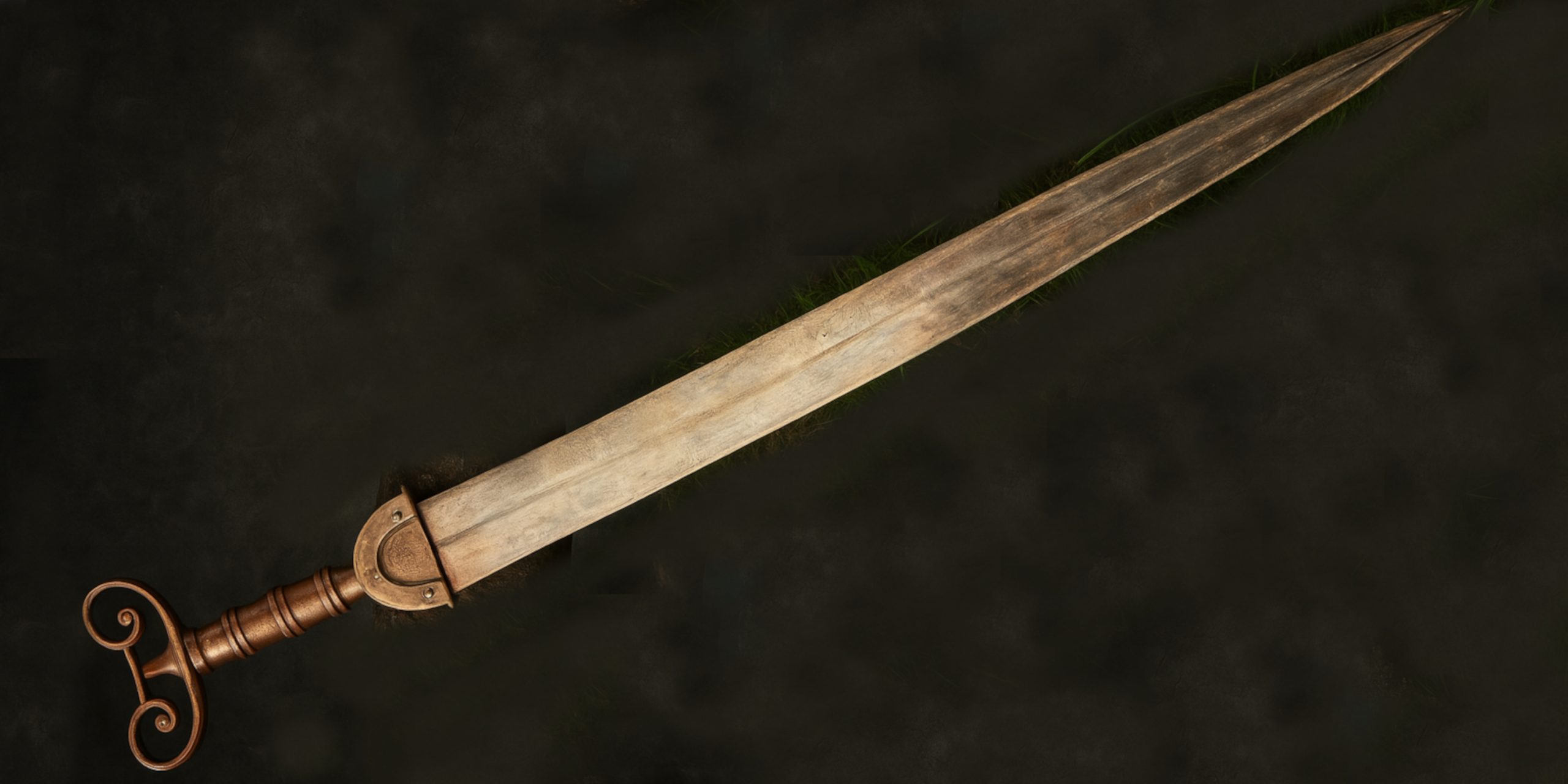
The Celtic antenna sword is one of the most recognisable blades from early Iron Age Europe, known for its distinctive handle terminals that resemble antennae. These weapons were used by various Celtic tribes and offer valuable insight into the martial culture and metallurgy of prehistoric Europe.
The antenna sword, named after the curved extensions on its hilt, is a hallmark of Hallstatt and La Tène period weaponry. Originating in the early 1st millennium BC, it reflects both practical innovation and artistic craftsmanship. Though mainly associated with Celtic Europe, the type appears across a wide geographic area, including regions in modern-day France, Germany, Austria, and even into the Balkans and Iberian Peninsula.
Specification
| Feature | Description |
|---|---|
| Period | Approx. 9th to 5th century BC (Hallstatt period) |
| Total Length | 60 to 85 cm |
| Blade Length | Typically 50 to 70 cm |
| Blade Type | Leaf-shaped, double-edged |
| Material | Iron (early examples in bronze) |
| Grip Type | Short tang, usually organic materials (wood, horn) |
| Pommel Design | Double ‘antenna’ terminals |
| Fullers | Occasionally present |
| Scabbard | Organic, often not preserved |
History and Evolution
The antenna sword marks a transitional stage from the Bronze Age to the Iron Age. Early versions were likely inspired by Mycenaean and Near Eastern swords, but over time, local Celtic blacksmiths developed a distinct style. By the 8th century BC, iron had replaced bronze, and the leaf-shaped blade with its iconic hilt design became widespread across Celtic Europe.
The antennae themselves may have had ceremonial or symbolic value, though their exact purpose remains debated. Some argue they allowed better control during combat, while others suggest a ritualistic or status-related function.
Over time, the antenna sword gave way to longer slashing weapons and eventually to La Tène-style swords, which were better suited to mounted combat and more advanced armour types.
Advantages
- Symbolic and Status Value: These swords often indicated high rank or tribal prestige.
- Compact Blade: Effective for thrusting and close combat in formation fighting.
- Distinct Craftsmanship: Each hilt was hand-forged, resulting in a unique aesthetic.
Disadvantages
- Short Reach: Less effective against longer weapons in open combat.
- Grip Weakness: The organic handle materials degrade, and surviving examples are often fragmentary.
- Not Ideal for Slashing: Despite a wide blade, the short length limited slashing momentum.
Comparison with Similar Weapons
| Weapon Type | Blade Length | Material | Use Style | Region |
|---|---|---|---|---|
| Celtic Antenna | 50–70 cm | Iron | Thrusting, short-range | Central/NW Europe |
| Greek Xiphos | 60–80 cm | Iron | Thrusting/Slashing | Greece |
| Roman Gladius | 65–85 cm | Steel | Close combat, stabbing | Roman Empire |
| Bronze Naue II | 60–75 cm | Bronze | Transitional/Thrusting | Central Mediterranean |
Legacy
The antenna sword is a vital part of early European martial culture. It represents the shift from tribal warfare to more organised, large-scale conflicts. Its design influenced later Celtic and Continental swords, and it remains a key artefact in discussions of Iron Age European warfare.
In museums and academic circles, the antenna sword is often cited as a marker of early ironworking sophistication and social hierarchy within Celtic communities.
Where to See
Several institutions hold fine examples of Celtic antenna swords:
- British Museum (London): Holds several Hallstatt-type antenna swords.
- Musée d’Archéologie Nationale (France): Offers specimens from France and Switzerland.
- Naturhistorisches Museum (Vienna): Extensive Hallstatt and La Tène collections.
- Louvre (Paris): Occasionally displays early Iron Age weaponry.
Collector’s Guide
Authenticity: Antenna swords are extremely rare and often recovered from graves or hoards. Genuine examples are almost never available on the open market and are tightly regulated.
Auction Prices (when available):
- Partial or fragmentary pieces: £5,000 to £15,000
- Complete or near-complete specimens: £20,000 to £50,000+
- Provenanced examples with documentation: potentially much higher
Tips for Collectors:
- Beware of modern reproductions with artificially aged patinas.
- Iron preservation is difficult; pieces should be stored in stable humidity.
- Provenance is crucial, always seek expert verification.
The Celtic antenna sword remains a rare and powerful symbol of early European martial identity. Its short, leaf-shaped blade and curved pommel terminals are not only practical innovations but also signs of the artistic and ritual values held by the warriors who wielded them.



